


C57BL/6-Nt5etm1(NT5E)Bcgen/Bcgen • 110027
| Product name | B-hCD73 mice |
|---|---|
| Catalog number | 110027 |
| Strain name | C57BL/6-Nt5etm1(NT5E)Bcgen/Bcgen |
| Strain background | C57BL/6 |
| NCBI gene ID | 23959 |
| Aliases | NT5E (Nt5e, 5' nucleotidase, ecto) |
Gene targeting strategy for B-hCD73 mice. The human NT5E whole coding sequence was inserted following the 5’UTR of the mouse Nt5e in B-hCD73 mice.
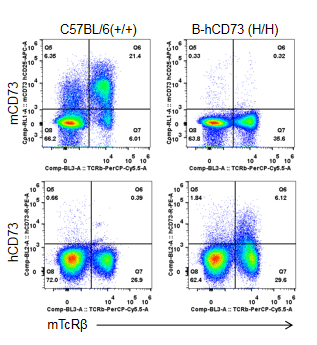
Strain specific CD73 expression analysis in homozygous B-hCD73 mice by flow cytometry. Splenocytes were collected from WT and homozygous B-hCD73 (H/H) mice, and analyzed by flow cytometry with species-specific anti-CD73 antibody. Mouse CD73 was detectable in WT mice. Human CD73 was exclusively detectable in homozygous B-hCD73 but not WT mice.
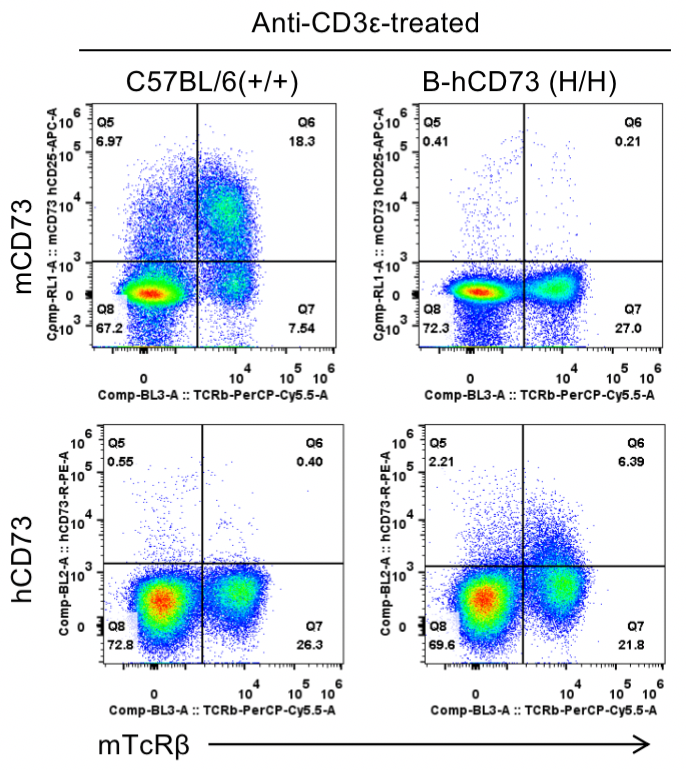
Strain specific CD73 expression analysis in homozygous B-hCD73 mice by flow cytometry. Splenocytes were collected from WT and homozygous B-hCD73 (H/H) mice stimulated with anti-CD3ε in vivo, and analyzed by flow cytometry with species-specific anti-CD73 antibody. Mouse CD73 was detectable in WT mice. Human CD73 was exclusively detectable in homozygous B-hCD73 but not WT mice.
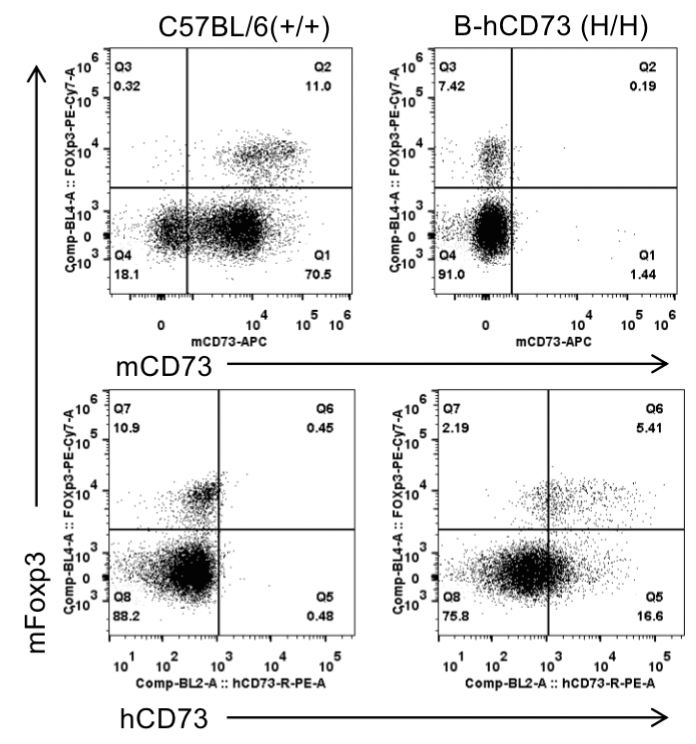
Strain specific CD73 expression analysis in homozygous B-hCD73 mice by flow cytometry. Splenocytes were collected from WT and homozygous B-hCD73 (H/H) mice, and analyzed by flow cytometry with species-specific anti-CD73 antibody. Mouse CD73 was detectable in WT mice. Human CD73 was exclusively detectable in homozygous B-hCD73 but not WT mice.
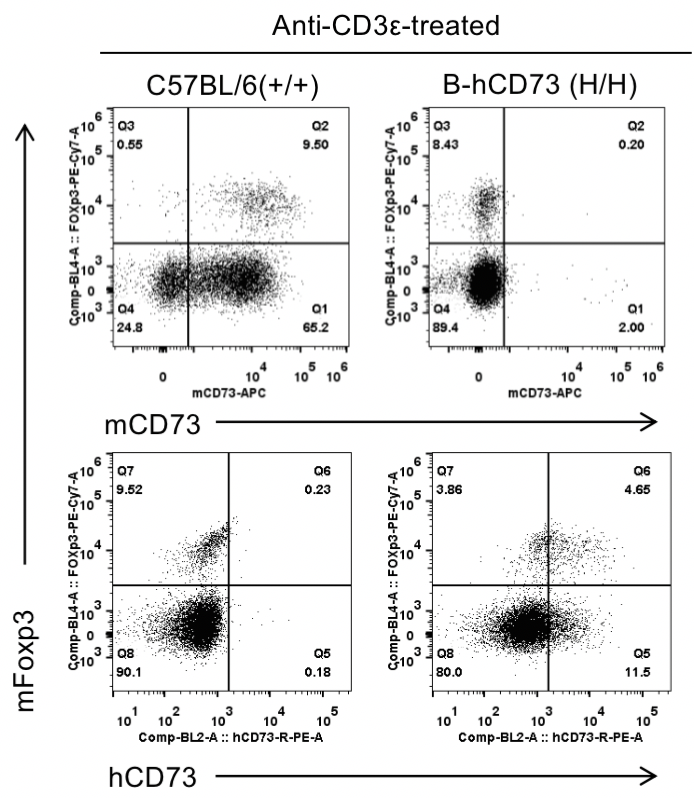
Strain specific CD73 expression analysis in homozygous B-hCD73 mice by flow cytometry. Splenocytes were collected from WT and homozygous B-hCD73 (H/H) mice stimulated with anti-CD3ε in vivo, and analyzed by flow cytometry with species-specific anti-CD73 antibody. Mouse CD73 was detectable in WT mice. Human CD73 was exclusively detectable in homozygous B-hCD73 but not WT mice.

Analysis of B-CAG-hCD73 MC38 by FACS. Flow cytometry analysis of the B-CAG-hCD73 MC38 was performed to assess anti-human CD73 Ab. Single live cells were gated and used for further analysis as indicated here. Human CD73 expression was detectable on B-CAG-hCD73 MC38 as evidenced by Hu101-28 (in house) and Oleclumab (in house) binding vs isotype control.

Analysis of splenocytes of B-hCD73 mice by FACS. Splenocytes were isolated from female B-hCD73 mice (n=3, 6-week-old). Flow cytometry analysis of the splenocytes was performed to assess anti-human CD73 Ab binding with Treg cells. Single live cells were gated for CD45+Foxp3+ population and used for further analysis as indicated here. Human CD73 expression was detectable on Foxp3 Treg cells in B-hCD73 mice as evidenced by Hu101-28 (in house) and Oleclumab (in house) binding vs isotype control.
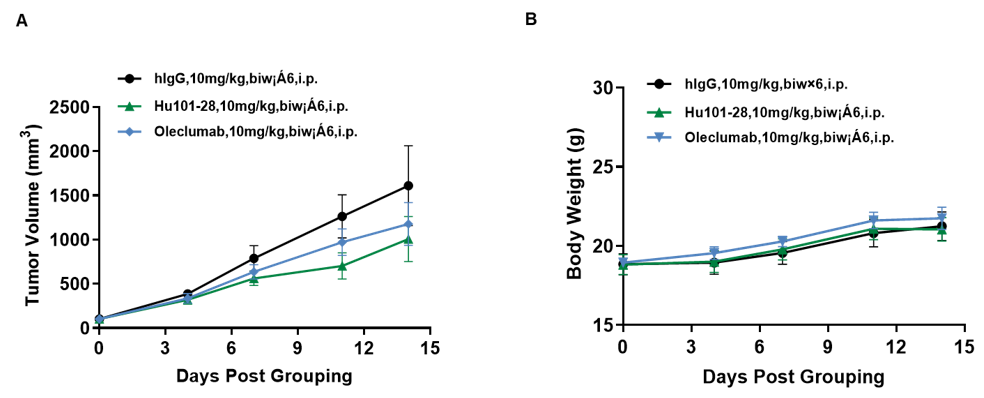
Antitumor activity of anti-human CD73 antibodies in B-hCD73 mice. (A) Anti-human CD73 antibodies inhibited hCD73-MC38 tumor growth in B-hCD73 mice. Murine colon cancer hCD73-MC38 cells were subcutaneously implanted into homozygous B-hCD73 mice (female, 6-7 week-old, n=5). Mice were grouped when tumor volume reached approximately 100 mm3, at which time they were treated with anti-human CD73 antibodies with doses and schedules indicated in panel A. (B) Body weight changes during treatment. As shown in panel A, two anti-human CD73 antibodies (in house) were efficacious in controlling tumor growth in B-hCD73 mice, demonstrating that the B-hCD73 mice provide a powerful preclinical model for in vivo evaluation of anti-human CD73 antibodies. Values are expressed as mean ± SEM.
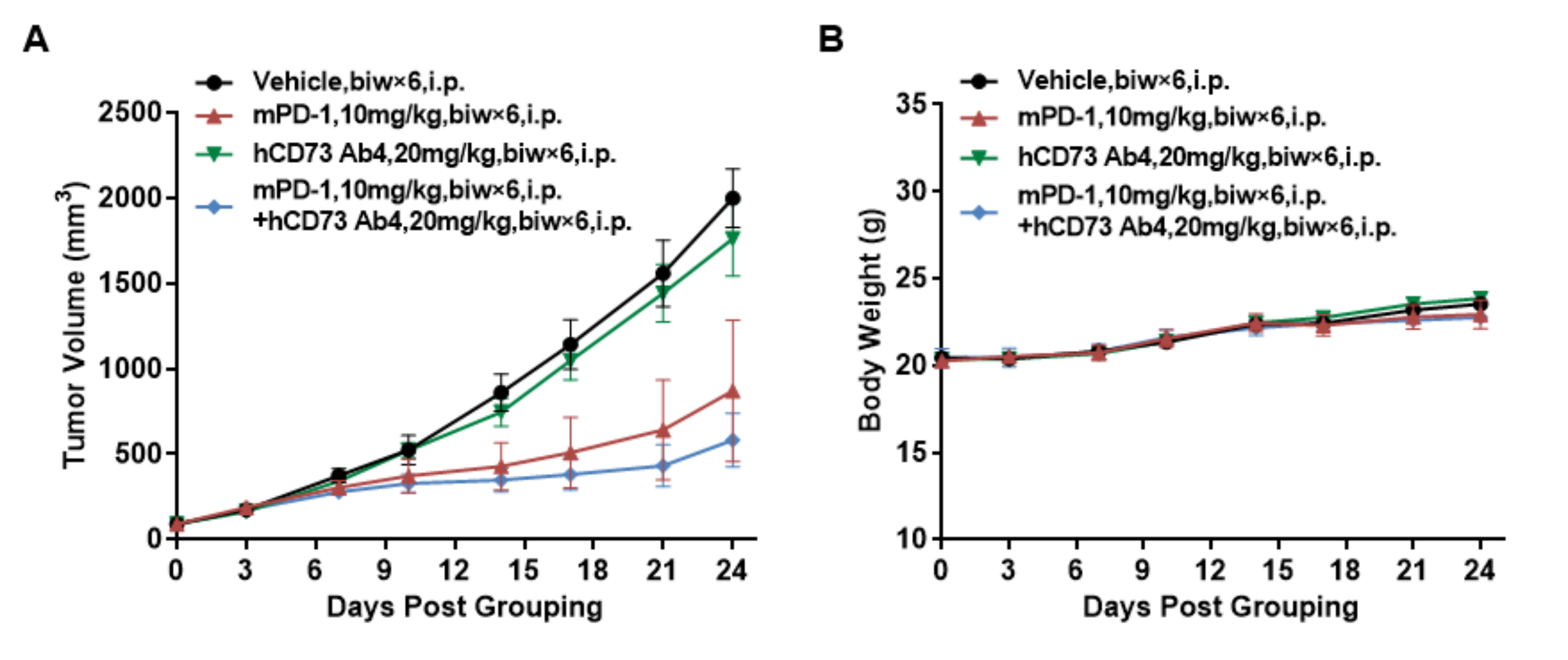
Antitumor activity of anti-mouse PD-1 antibody combined with anti-human CD73 antibody in B-hCD73 mice. (A) Anti-mouse PD-1 antibody combined with anti-human CD73 antibody (provided by client) inhibited hCD73-MC38 tumor growth in B-hCD73 mice. Murine colon cancer hCD73-MC38 cells were subcutaneously implanted into homozygous B-hCD73 mice (female, 7-8 week-old, n=6). Mice were grouped when tumor volume reached approximately 80 mm3, at which time they were treated with anti-mouse PD-1 antibody and anti-human CD73 antibody with doses and schedules indicated in panel A. (B) Body weight changes during treatment. As shown in panel A, combination of anti-mPD-1 antibody and anti-hCD73 antibody shows more inhibitory effects than individual groups, demonstrating that the B-hCD73 mice provide a powerful preclinical model for in vivo evaluating combination therapy efficacy of mPD-1 antibodies and hCD73 antibodies. Values are expressed as mean ± SEM.